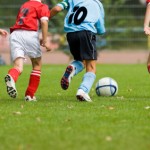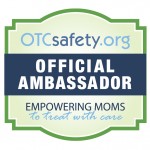 With another school year just around the corner, our children will soon be balancing homework and time on the field.
With another school year just around the corner, our children will soon be balancing homework and time on the field.
Football, soccer, gymnastics, or dance; whatever your child’s sport of choice, it’s important to be mindful of common sports injuries. Knowing what our children are at risk for and how best to handle these injuries is important for parents and coaches alike.
Let’s take a closer look at five of the most common sports injuries in children.
Concussions
Concussions are mild traumatic brain injuries caused by a direct blow to the head or a fall resulting in enough force to bang the brain against the skull. That is precisely what happens. The brain hits the skull and what you get is injury to the brain that can range from mild to severe.
Football players have the highest incidence of concussion; however, any contact sport (soccer, hockey, basketball, wrestling, etc.) puts children at risk for sustaining a concussion. All it takes is one jolt from a tackle, a wayward soccer ball to the head, or a hard fall to the ground for symptoms of a concussion to manifest in your child.
Contrary to popular belief, loss of consciousness is not the telltale sign of a concussion. In fact, most young athletes who do suffer from a concussion will not have been “knocked out”. More commonly what you will notice is headache, dizziness, blurred vision, difficulty concentrating, inability to recall events surrounding head injury, mood changes, and/or sleep disturbances. These symptoms may show up immediately following a head injury or may take several hours to a few days to make an appearance.
What is most important to know is that any player who suffers a significant head injury on the field or elsewhere must be evaluated by a doctor and receive medical clearance before returning back to play. I’m reminded of a young athlete I saw a few years ago who suffered a minor concussion while training for football. He, his mother, and his coach worked as a perfect team as they made sure he was cleared by me before resuming play.
The popular refrain, when in doubt, sit it out, holds ever so true. I would always err on the side of caution here. Players should be mandated to physical rest until symptoms completely resolve. This could be anywhere from one week to a few months. Sending a player back out on the field prematurely could lead to repeated concussions which ultimately could result in permanent damage to the brain.
ACL Tear
Your teenage daughter is out on the soccer field, completely engrossed in the game at hand. She makes a sudden lurch for the ball and then collides with another player. Immediately, you can see something is wrong as she grabs her knee and yells out in pain.
Later she will tell you that she felt a “pop” in her knee at the time of injury. And sure enough, her doctor makes the diagnosis of an ACL tear after examining her and ordering an MRI of her knee.
This acute knee injury is typically how it is played out on the field. The ligament (ACL) that connects the thigh bone (femur) and shin bone (tibia) inside the knee joint has torn. This results in immediate pain, a feeling that the knee has “given out”, and incredible swelling.
ACL tears are 4-8 times greater in young female athletes engaged in jumping, pivoting, and collision sports such as soccer and basketball. Treatment usually consists of surgical correction especially if your child wishes to return to the sport. However, this decision should be made after careful consideration by your child, you, and your child’s doctor.
Ankle Sprains
Of the sprains and strains, the ankle is the most commonly sprained joint. The ligaments of the ankle become overstretched or torn resulting in pain, swelling, and possibly an inability to bear weight on that ankle.
A child engaged in a sport that requires quick direction changes such as soccer or field hockey are most at risk. Turning, twisting, or rolling the foot onto its side can result in an ankle sprain. These can vary from mild (grade 1) to severe (grade 3, with complete ligament tear).
Treatment consists of rest, ice, compression, and elevation (RICE). Your child’s doctor may want an x-ray to rule out a bone fracture depending on the extent of injury and age of your child. Additionally, your child should refrain from training until the ankle has completely resolved and is cleared by your doctor. This is typically 2 weeks in an uncomplicated ankle sprain.
Osgood Schlatter Disease
In contrast to the above conditions which are injuries that occur acutely, Osgood Schlatter Disease is a condition that arises over time and is considered an overuse injury. What happens here is that the “bump” right below the knee becomes sore, painful to touch, and possibly swollen after repeated jumping and running associated with sports such as basketball, soccer, gymnastics, or ice skating.
The tendon from the thigh muscle attaches to that “bump” on the lower leg and with the repeated contractions of that muscle, it pulls on the growth plate there, causing inflammation and ultimately, pain. Your child’s doctor can usually diagnose this by examining your child and getting the history from you. Occasionally, an x-ray may be needed to assist with this diagnosis.
Treatment consists of icing the knee and ibuprofen if necessary. Some children will require a period of rest and then gradually returning to play if their condition is more severe.
Heat Exhaustion and Heat Stroke
Another sport injury not to be overlooked is heat related illnesses in young athletes, especially while training during the late summer months. 2011 saw 5 high school football players die of heatstroke while training in high heat and humidity last summer.
The most critical take home point is this: children should not be engaging in vigorous physical activity outdoors if the heat index is 100 or greater in your area. Parents and coaches should be well versed in knowing the signs and symptoms of heat exhaustion such as dizziness, fainting, nausea, vomiting, and/or an increase in body temperature. Heat related illnesses are 100% preventable and we (parents and coaches) must exercise caution and common sense before sending our children out to train in high heat and humidity.
An Ounce of Prevention
Now that you know what can happen while your child is out there on the field, let’s focus on prevention. Make sure your child knows the rules of the game he is playing, ensure that he is wearing the appropriate safety gear (helmets, mouth guards, padding, athletic cups, etc.), make time for stretching and warming up, drink plenty of water before, during, and after playing, and most of all, remove your child from the game immediately if he is hurt. Have him thoroughly evaluated before returning to play.
Playing organized sports can be one of the most exciting and rewarding endeavors your child partakes in. It’s great for both their physical and emotional health, so I don’t think we need to go crazy with worry. We should enjoy it too. By being aware, prepared, and armed with simple preventive steps to up their safety, we can freely cheer them on from the sidelines.
Pin It








[…] coach worked as a perfect team as they made sure he was cleared by me before …See more here:From concussions to heat stroke:5 common sports related injuries in …August 7th,2012 | Category:Sports Fitness Leave a Reply Cancel reply Name […]
Thank you so much for saying that dance is a sport!!!!! I love u even more!!!!!
[…] From Concussions to Heat Stroke: 5 Common Sports Related Injuries in Kids This article does a thorough job of explaining each of the five most common injuries. […]